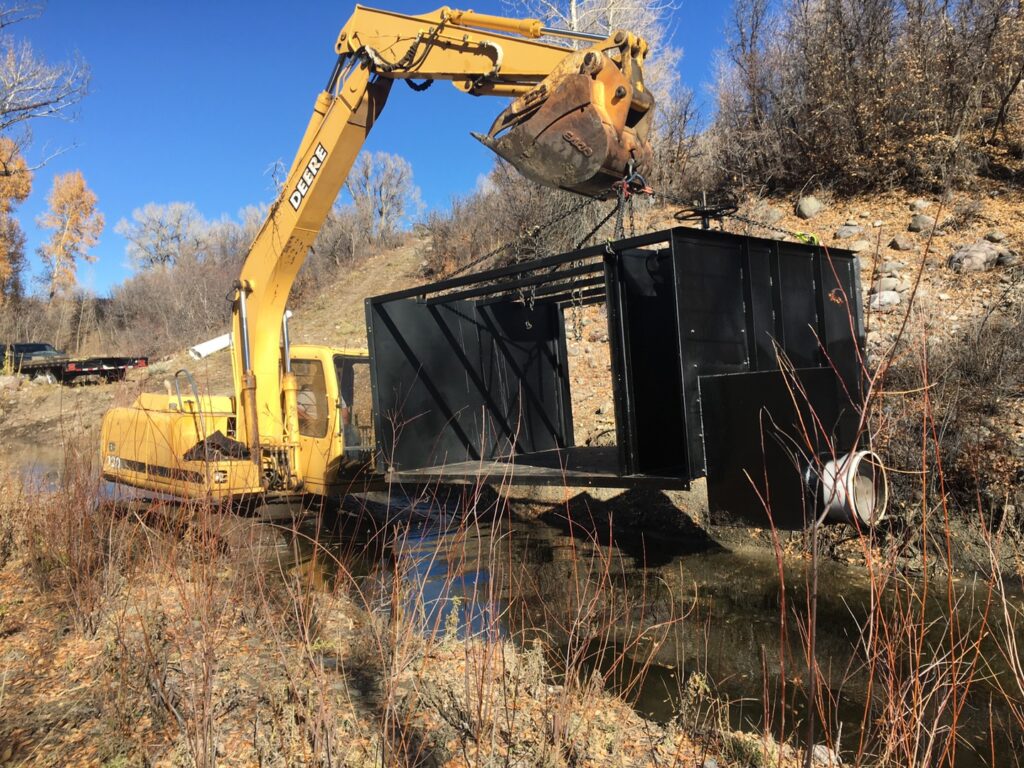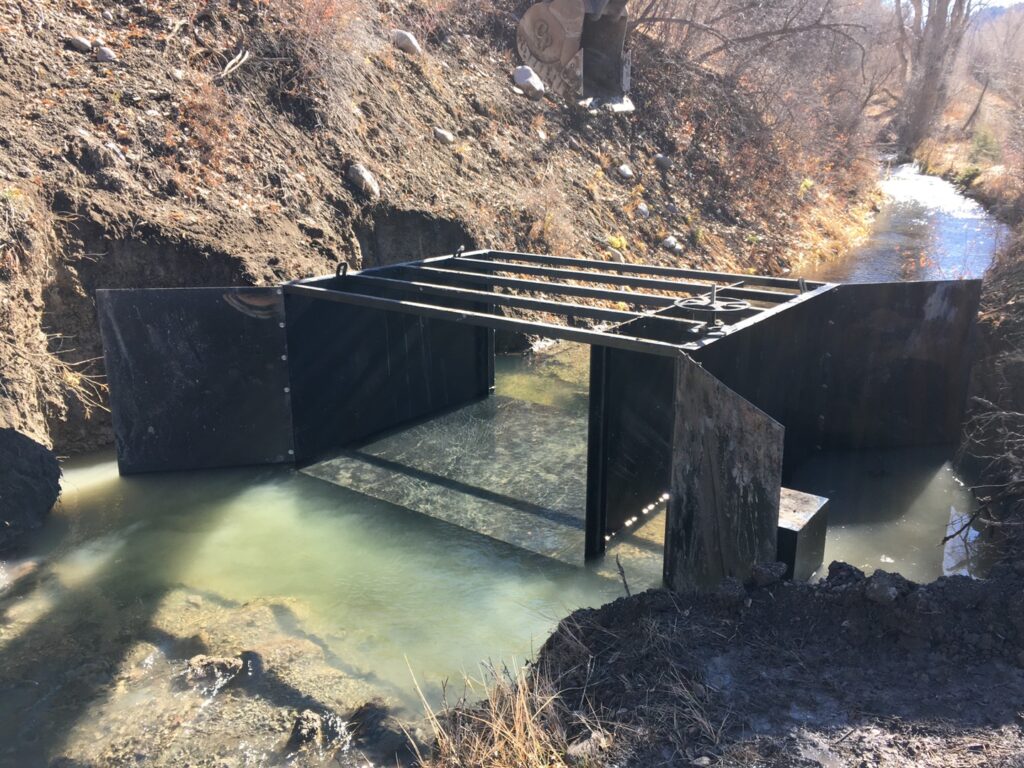The Little Cimarron River project is a groundbreaking water sharing project that is designed to continue existing agricultural production during the early season and support river health when needed later in the summer. We recently installed irrigation infrastructure in McKinley Ditch that will allow Colorado Water Trust to return its water to the Little Cimarron for the first time ever. I asked our Project Manager, Tony LaGreca, to share a bit about this innovative project and recent exciting developments.
What is the problem Colorado Water Trust is trying to solve?
The Little Cimarron river flows north from the Uncompahgre Wilderness in the San Juan Mountains. As it leaves the mountains, a series of agricultural diversions can diminish flows and cause dry ups for over three miles of the river. This strands and exposes fish and affects other wildlife that rely on healthy flows in the Little Cimarron. Over three miles of the Little Cimarron can go nearly dry in the late summer months.
What is the solution?
To address the dry ups and low flows, Colorado Water Trust purchased water rights in the McKinley Ditch from the Western Rivers Conservancy. We then went to Colorado’s water court to change the water rights to add instream flow as a beneficial use while keeping the existing agricultural uses. We also developed an agreement with the landowner to ensure continued agricultural water use and to govern how and when the water is used for instream flow.
What makes this project special?
This innovative project worked within Colorado water law to develop a unique water sharing agreement that avoids the typical “buy and dry” water transaction that is damaging to Colorado’s agricultural economy. The water rights decree we obtained is the first of its kind, allowing the water to be used for both agricultural purposes and to benefit the aquatic environment. Under our decree and agreement with the landowners, the water will be used to irrigate a high altitude grass hay meadow from April until July or August, depending on the forecasted river year. After the irrigation season, up to 5.75 cfs of irrigation water can be returned to the Little Cimarron River for the rest of the irrigation season, keeping its aquatic ecosystem healthy.
This project began in 2014. Why has it taken so long to implement?
Flow restoration projects that have never been done before are bound to take a long time to complete and this project was no exception. Colorado’s Water Court system is a slow process by design to ensure that any change in water use does not injure other water users in the system. Since we were requesting a unique and innovative decree, our case was under considerable scrutiny and took nearly four years to work its way through the system.

Apart from the legal process, this project also required infrastructure upgrades to operate. We worked with multiple landowners and water users on the ditch to develop a solution that would allow us to accurately separate our water when needed without affecting the other users on the river. We then had to raise funds to construct and install the 10×10 ft steel “splitter” structure that will physically deliver our water back to the Little Cimarron River. We were able to install that infrastructure this fall and are poised to operate the project for the first time in 2022.

What’s next for the project?
To further protect the instream flow, we are working to upgrade infrastructure at another ditch downstream to allow for bypass of the water. We are working on designs and will begin fundraising for this work soon. However, this project offers so much more than just instream flows for the Little Cimarron. Our project is going to be the first permanent split-season irrigation project on a high altitude grass hay meadow.
There is little information about how a grass hay meadow will respond to a permanent split-season arrangement and so we have partnered with the CSU Water Center, Ranch Advisory Partners, and the landowners to study the impact of this project on the land management, soil quality, and crop output, as well as the ranch’s economic operations. The study will provide vital information for agricultural producers who are looking to undertake a water sharing project in the future. We hope it will encourage other split-season agreements to be implemented on more rivers throughout the state in the future.
Learn more about the history of our Little Cimarron River project here.